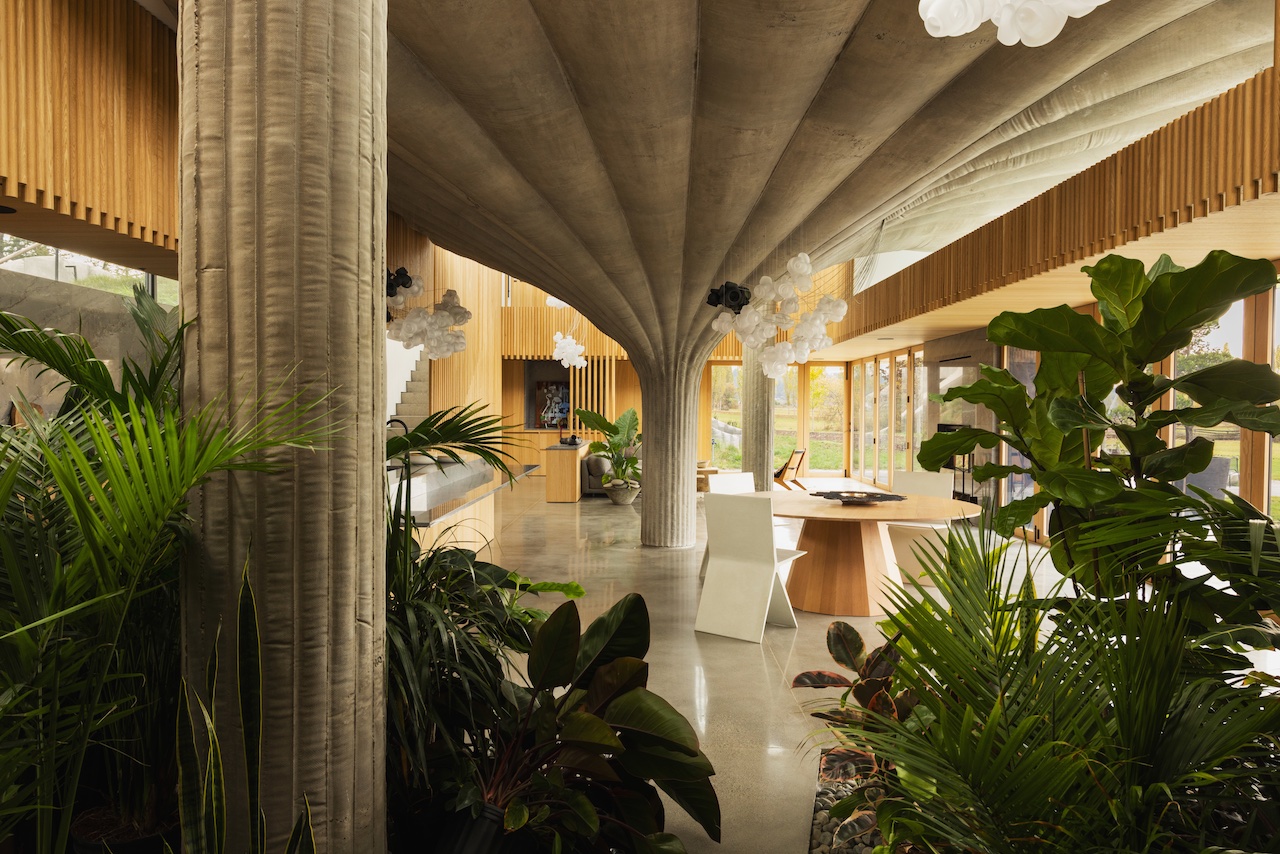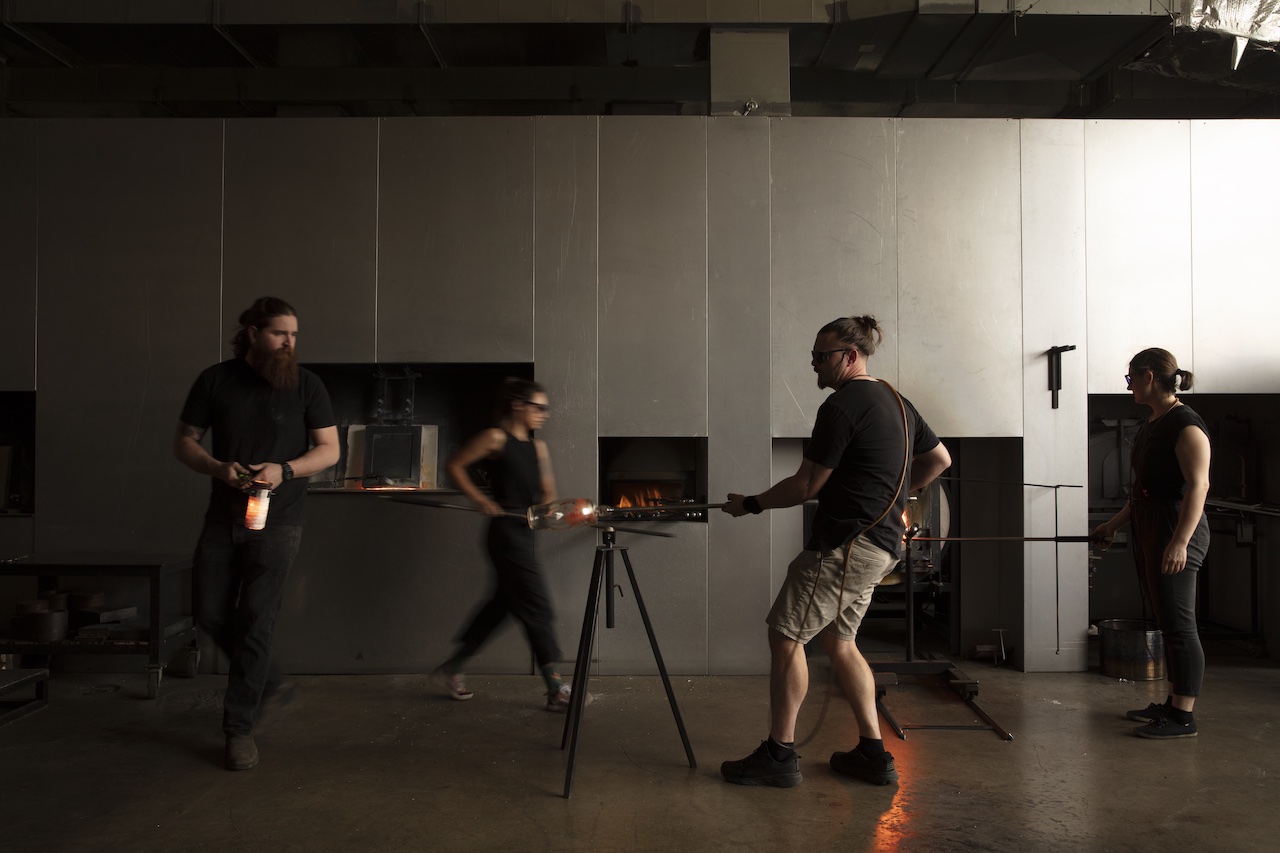
Bocci’s brainchild Omer Arbel and his team are involved in materials research, lighting design, building design, site specific installations and a host of other projects. The design studio and manufacturer based in Vancouver, Canada, is dedicated to cultivating a lateral and open-ended relationship between creative direction and craft. Eleanor Smith, Bocci’s sales director who visited Space Furniture in Singapore earlier this year, tells us more about the brand’’s new projects and philosophy.


Bocci’s showcase in Milan fair 2024
Bocci launched a permanent Italian base in Milan during Milan Design Week 2023. The apartment, located in an early 20th-century building in Zona Vincenzo Monti, offers long-term programming and provides visitors with an in-depth experience of the brand and its ecosystem.
“We’ve been exhibiting in Milan for the past 10 to 15 years. We want people to be able to live in our work. That was the whole concept of this space. And the idea was also to not produce so much waste, like the way short term exhibitions are set up at the convention centre, and then you have to throw all the materials away. We decided it is a privilege to be able to invest in the city itself and actually purchase property that we can continue to reinvigorate every year,” says Smith.
The second interior iteration of Bocci’s Milan home was unveiled during Milan Design Week 2024. This year, a pop-up shop within the home saw the launch of a new sepia-coloured edition of the 14p — a portable adaption of their iconic first design. 14p transforms Bocci’s iconic 14 Series into a candle-like table light. The rechargeable cast-glass pendant is fully wireless and has three dimming levels. There was also a selection of new glass artworks by Milanese artist Valentina Cameranesi Sgroi. The apartment was beautifully transformed into a nocturnal theatre and featured fresh interpretations of the brand’s recent and iconic designs.


Material matters
According to Smith, the company doesn’t really plan things too far in advance because their whole approach to design is to allow material to dictate form. “What we do is select a material and a process, and then experiment and see what that leads to. So when we have this type of approach, you can’t always be on a strict timeline, because we never begin with a finished form in mind,” she says.
In general, the team references processes and materials that they’ve worked with before or sometimes start with a completely new material. “They will try and introduce new ways of working with that material and see what happens,” says Smith.
For instance, one of the newest Bocci products is no.118. “This is an experiment involving metal and glass like some of our other pieces, but there’s no metal remaining in the finished piece. What the team does is actually place white glass into a handmade steel cage and then the glass is extruded through the holes of the cage. The design process took probably about three to four years to end up at this shape. And all of the glass is pushed through this one tiny spot, which is why we do this little off-cut so you can see where the piece originated from and then the lamp goes in here,” Smith explains.
“It’s a very experimental process. Every single piece is totally unique. And it’s very specific to the person who is blowing the glass – because they’re the ones applying the air and the heat to develop these petals,” she says, adding that the metal cages are also reused so there’s no product waste.

Beyond lights
When people think of Bocci, they think of lighting objects. “But what we actually do is much broader. Our methods of research go into sculpture, performance, and architecture,” says Smith.
For instance, an architectural project in Vancouver that Omer had finally completed is called 75. The focus material for this project was concrete. “In particular, focusing on the various states of concrete, how it transforms from a liquid to a solid object. We often see concrete used in just a rectilinear format. But because it is liquid, it can really be used to make a much more organic shape. And that was the idea with this project – to make these gigantic, concrete lily pads out of a plywood framework that’s lined with fabric. The concrete is poured very slowly over time and the texture of the fabric is imprinted on the exterior so you get these beautiful folds,” says Smith.

Team work
“Omer is quite a shy person. But when you are in conversation with Omer, you find that he’s a very intellectual person and really excited about all different kinds of things. Chemistry, physics etc. they’re all present in his brain. And this is what he’s interested in seeing – how these different avenues of research can be applied to materials or processes,” shares Smith.
“I think what is so great about working at Bocci, and working with Omer is that he’s the dreamer and the intellect, but he’s also a very collaborative individual,” she adds.
The company’s glassblowers, metalworkers, chemists, sculptors, designers, architects, and engineers all get to work directly with Omer as well as exchange skills and knowledge. “Even as a sales director, I’m invited to contribute to the process of developing new work. We’re all asked for our feedback, and for our contributions, and so it really is a community at our office. We’re all working together and everybody’s ideas are welcome.”

“Omer is a high concept person. He hands the concept to people at Bocci to develop a little bit further and then we bring those developments to him for review. And if he finds it interesting, he’ll explore further. This is the way that ideas develop. He’s a person that’s open to discussion and collaboration,” adds Smith.


 Share
Share









